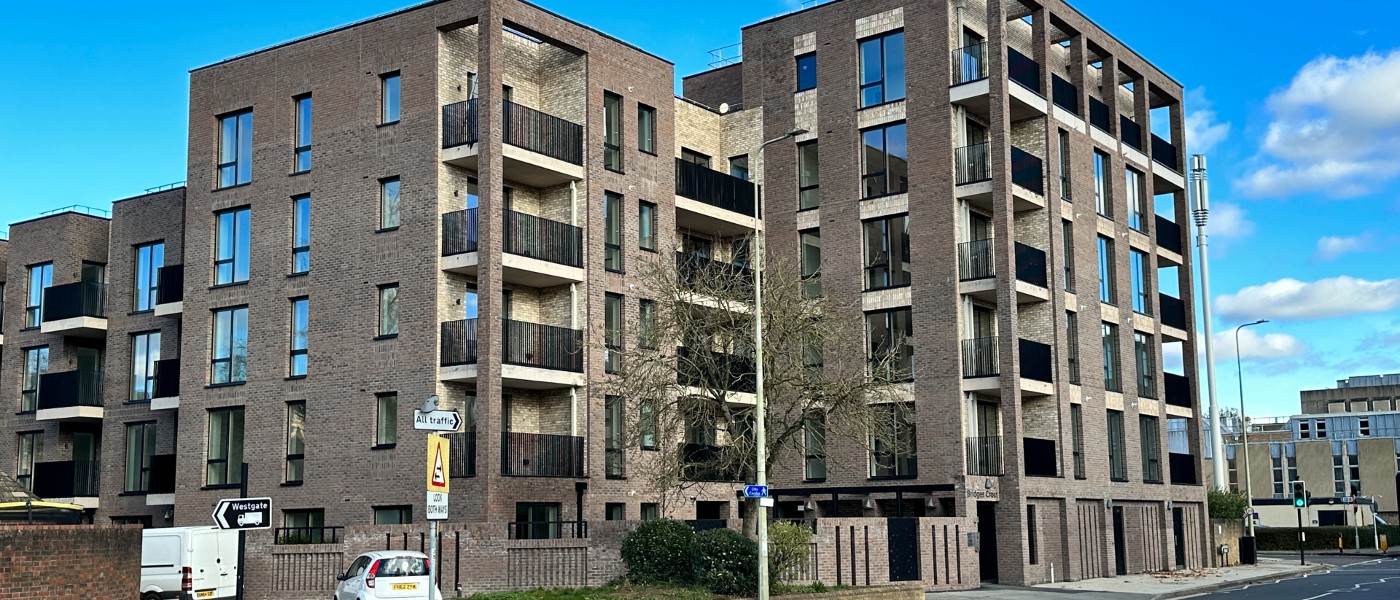
OX Place completed this development of 36 homes in the city centre in November 2023.
The development is a single block of 4 to 6 storeys, made up of 18 1-bed flats, 17 2-bed flats and 1 3-bed flat.
Each flat has a private garden or balcony and the homes also have access to 2 feature communal courtyards.
Bridges Cross is probably best known to current Oxford residents as the site of former homeless hostel Lucy Faithfull House. A bench in one of the courtyards features a plaque commemorating Lucy Faithfull, a social worker and lifelong campaigner for children’s rights.
The new development also sits on the site of a 13th-century Dominican Order (Blackfriars) friary that was demolished after the dissolution of the monasteries by Henry VIII in 1538. An archaeological excavation in 2021 revealed evidence of Oxford’s medieval past that included a stone coffin and decorated floor tiling, together with external and internal walls and floors.

Affordable
Nearly three-quarters (72%) of Bridges Cross is affordable, exceeding our 50% affordability requirement for a development of this size.
The 36 flats are made up of 15 council homes let at social rent, 3 council homes at affordable rent and 8 shared ownership homes.
The remaining 10 flats are OX Place’s first homes for market sale. Sale receipts will be invested in providing more affordable housing and supporting frontline council services.

Sustainable
OX Place’s ‘fabric first’ approach means Bridges Cross features enhanced insulation and air tightness standards. Rooftop solar PV panels will help generate up to 60% of the development’s overall energy use.
This means Bridges Cross exceeds our planning requirements by going 60% beyond carbon reduction targets in 2013 building regulations.
Bridges Cross also features OX Place’s first green roof. Green roofs – also called living roofs – offer many benefits. These innovative features naturally insulate buildings and absorb rainwater, cutting energy costs and reducing flood risks.
Green roofs improve air quality and provide natural cooling to counteract the effects of urban heat islands. They also boost biodiversity by attracting wildlife like birds, bees and other insects and improve performance of the solar PV panels.
The development is car-free, except for 2 parking spaces with EV charging provision for flats that can be adapted for people with mobility needs. Each flat has 2 bike parking spaces.


Partners
Bridges Cross was designed by Levitt Bernstein Architects and built by Willmott Dixon. The development was supported with £1,377,000 from the Oxfordshire Housing and Growth Deal.

